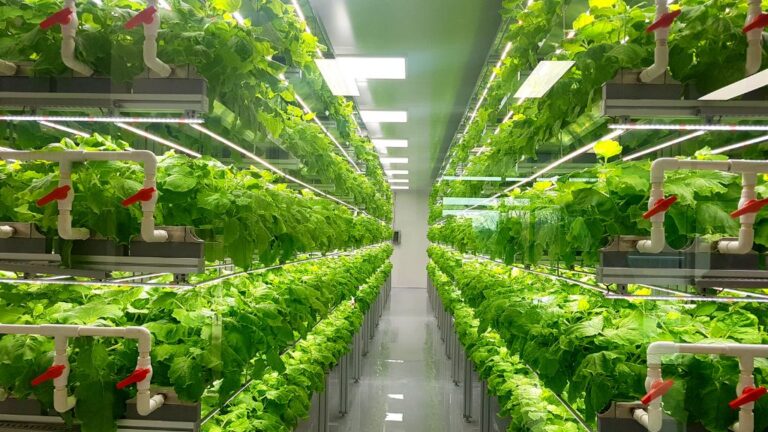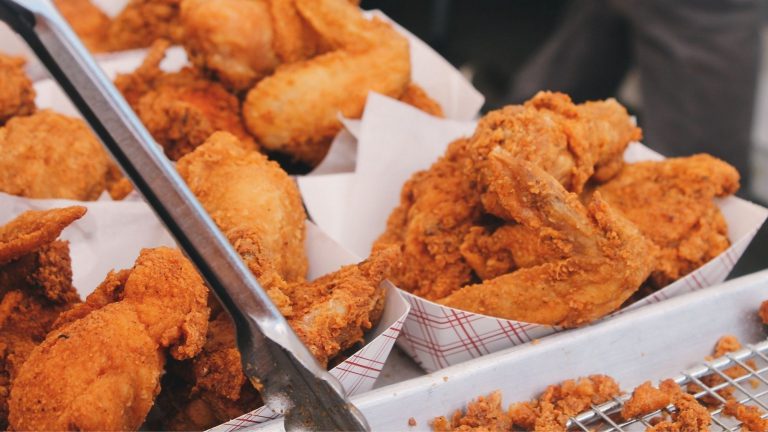Resilience. This one word to me encapsulates everything about the challenges of the last year and the path out of the COVID-19 pandemic. Resilience is the capacity to face adversity and remain strong, but also to be open to change, to be flexible. A robust system can endure, but a resilient system can adapt.
We’ve shown an incredible capacity for resilience through the crisis. Our food systems are a good example. Despite restrictions on movement and the closing of entire parts of the economy, our ability to produce, transport and obtain the food we need has remained remarkably strong and evolved along the way.

But it’s not all been good news:
The pandemic has exposed cracks in the operation of our food systems that we should pay attention to.
The first chink in the armour of our supply chains appeared at the outset of the pandemic: panic buying. High-income country food systems are set up to ensure ‘just-in-time’ availability of essential items. They weren’t prepared for COVID.
Most of us struggled to get groceries in the initial weeks of the pandemic. I remember standing in queues for hours outside my local supermarket. Once inside, many basic items were completely unavailable. This was because some people bought way more than they actually needed, leaving little or nothing for everyone else. We all remember the lack of toilet paper, but we probably also recall that supply problems extended to long-life foodstuffs such as dried pasta and tinned tomatoes.
Governments in Europe and the US were unprepared for rationing in a time of crisis. As an example, the UK’s civil contingencies infrastructure report on food from 2018 assured us that we had absolutely nothing to worry about. That certainty was misplaced.
Vulnerable groups suffered most
For those with underlying health conditions or otherwise in the most vulnerable groups likely to be affected by COVID, and who could not venture out to supermarkets, delivery slots were almost impossible to find. For those on low incomes, delivery costs of £4-6 represent too high a price for a weekly £25-30 food budget. Standing in long queues was not an option for many elderly individuals or for those with disabilities.
The system did eventually sort itself out for many, but the most vulnerable have continued to suffer. Before the pandemic, emergency food needs had been increasing in the UK year-on-year. Even so, an assessment by the Trussell Trust found an 89% increase in the number of emergency food parcels handed out in April 2020 compared with the same month in the previous year. Many households received food bank support for the very first time.
The availability of fresh produce has also been affected by the pandemic
In the UK, almost half of vegetables and more than 80% of fruit are imported. A significant proportion of fresh produce is imported from the EU. During the pandemic the quantity of fresh fruit and veg coming from the EU and elsewhere was lower compared to the previous three years and the prices were higher, with implications for those on low incomes to obtain these healthier foods. Lack of availability and increased prices of fresh produce has been observed in Canada and the US as well.
Research in the US has also shown that at-risk populations have been eating more unhealthy diets as the pandemic has unfolded. Negative emotions can drive unhealthy eating; these emotions, particularly anxiety and panic have increased over the past year. Unhealthy diets have already driven an obesity epidemic in many high-income countries and we’ve seen the impacts in terms of an increased risk of complications and death from COVID-19.
Other problems with our food systems have become more apparent as a result of COVID-19.
Opportunism has resulted in failure to comply with food safety requirements
Food safety challenges have arisen in sales and marketing of food. For example, farmers have trialled direct to consumer sales and e-commerce when other supply routes have been shut off. Mass-caterers have shifted to take-aways and online sales of ready-to-eat meals. Individuals eyeing an opportunity have begun selling food directly from their homes, but where these new food business operators don’t necessarily recognise themselves as such and fail to comply with basic food safety requirements. Even if they did, the capacity to inspect them has been limited by the pandemic.
Meanwhile, online food sales have increased dramatically, and with that an increase in rogue traders who claim certain foods or supplements can prevent or protect against COVID-19, without evidence and without authorisation.
Labour shortages, transport disruption and changing border controls have affected the capacity of the agricultural sector and wider food industry to ensure consistent and sufficient food supply.
The agri-food sector is also vulnerable to emerging threats from climate change and biodiversity loss. At the same time, the sector plays a big part in driving these two global crises. COVID-19 has led many to suggest that a green recovery is needed to ensure economic and social resilience in future. The food system must play a large part in that process both to reduce its harmful effects and to ensure its own future.
Our food systems are more resilient than we might give them credit for…
…but they are also unequal, unhealthy, unsafe and unsustainable. Together, these challenges and a host of others, mean that our food systems are also profoundly unstable.
Effective emergency response requires significant coordination. Most countries have been ill-placed to provide this. The pandemic illustrates the importance of being better prepared.
We also need a more robust and resilient framework to tackle the wider systemic challenges associated with our food systems. Currently, cross-cutting issues fall to separate bodies with responsibilities for farming, supply chain issues, food safety, nutrition, and diet-related diseases, as well as connections to environmental issues such as air and water quality, and climate effects. A holistic and integrated approach is warranted.
The pandemic has illustrated the many threats and vulnerabilities we currently face. We can’t settle for enduring (or ignoring) each crisis as it presents itself, but must evolve to come out the other side stronger than before. Truly resilient food systems should be just such a priority.






